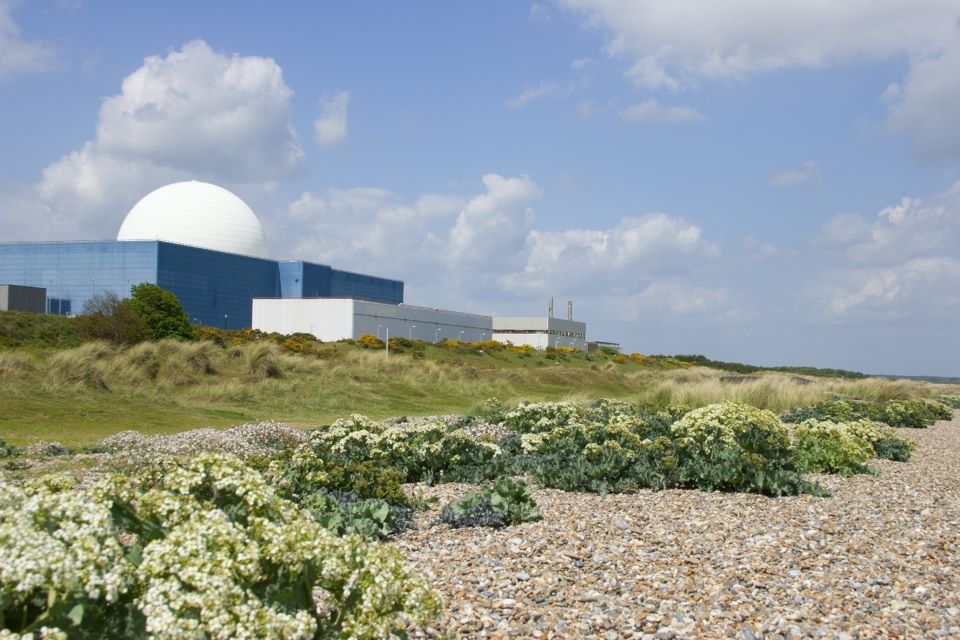Delivering new and advanced nuclear power
Wednesday, November 18, 2020

Department for Business, Energy, and Industrial Strategy(BEIS) - Policy paper
Building back better, supporting green jobs, and accelerating our path to net zero
Our electricity system will grow and could double in size by 2050 as demand for low-carbon electricity in sectors like heat and transport rises. Nuclear power provides a reliable source of low-carbon electricity. We are pursuing large-scale nuclear, whilst also looking to the future of nuclear power in the UK through further investment in Small Modular Reactors and Advanced Modular Reactors.
The UK was home to the world’s first full-scale civil nuclear power station more than 60 years ago, and this industry now employs around 60,000 people in the UK. We see the ongoing potential of this technology. Whether a large-scale power plant, or next generation technologies such as Small and Advanced Modular Reactors, new nuclear will both produce low carbon power and create jobs and growth across the UK. We are pursuing large-scale new nuclear projects, subject to value-for-money. To support this, we will provide development funding.
Alongside this, we are also looking to invest further in the next generation of nuclear technology. Subject to value-for-money and future spending rounds, we are announcing up to £385 million in an Advanced Nuclear Fund. This will enable investment of up to £215 million into Small Modular Reactors to develop a domestic smaller-scale power plant technology design that could potentially be built in factories and then assembled on site. It will unlock up to £300 million private sector match-funding.
We are also committing up to £170 million for a research and development programme on Advanced Modular Reactors. These reactors could operate at over 800°C and the high-grade heat could unlock efficient production of hydrogen and synthetic fuels, complementing our investments in carbon capture, utilisation and storage (CCUS), hydrogen and offshore wind. Our aim is to build a demonstrator by the early 2030s at the latest to prove the potential of this technology and put the UK at the cutting edge against international competitors.
To help bring these technologies to market, we will invest an additional £40 million in developing the regulatory frameworks and supporting UK supply chains.
New and advanced nuclear power could deliver…
- a large-scale nuclear power plant will support a peak of around 10,000 jobs during construction
- government support could unlock significant private investment, up to £300 million for development of small modular reactors alone
- each GW of nuclear power generation is enough to power 2 million homes with clean electricity
Policy impacts
- key role for nuclear in delivering deep decarbonisation of our electricity system, alongside renewables and other technologies
- high-skilled jobs created and sustained across the UK
- ikely role for AMRs in decarbonising industry, heat and transport
Target milestones
- 2020: Publication of the Energy White Paper
- 2021: Proposed launch of Phase 2 of UK SMR design development
- Mid 2020s: Hinkley Point C comes online
- Early 2030s: First SMRs and AMR demonstrator deployed in the UK
Case Study - Hinkley Point C comes online
Early 2030s:
First SMRs and AMR demonstrator deployed in the UK
Case study: Hinkley Point C
The main construction for Hinkley Point C in Somerset started in 2016. It is one of the largest and most complex construction projects in the UK and is expected to take approximately 10 years. The project will create around 25,000 employment opportunities during construction and 900 jobs throughout 60 years that it will be operational.
The developer originally predicted that during construction, the South West economy would receive a boost of £1.5 billion, while during operation, a contribution of £40 million a year will be made. In May 2020, the developer reported that £1.67 billion had already been spent with companies in the South West.